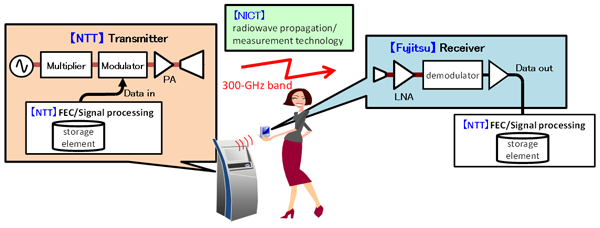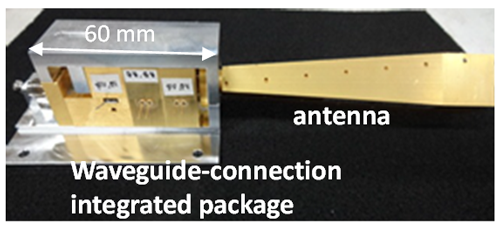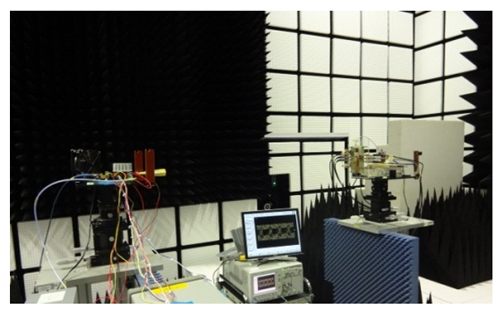By Nick Flaherty www.flaherty.co.uk
Researchers in Japan have developed the first compact transceiver to operate in the 300GHz terahertz band, enabling multi-gigabit data transfers.
The research is a wide collaboration of Nippon Telegraph and Telephone, Fujitsu and the National Institute of Information and Communications Technology and achieved a transmission rate of 40 gigabits per second through multiplex transmission using orthogonal polarization, enough to transmit a DVD of data in a few seconds.
As the transceiver can handle a broad frequency band, it is expected to be applied for high-speed wireless communication. An experiment to download a DVD to a compact, smartphone-sized terminal fitted with a matching developed receiver transferred a DVD in 2s.
In the experiment, an InP-based high-electron-mobility transistor (InP-HEMT) was used as an ultrahigh-speed device and incorporated in a high-frequency transceiver circuit designed as an integrated circuit (IC). This enabled 20Gbit/s data transmission as an integrated architecture connecting (via a waveguide) a metal package housing the IC and an antenna, and mounting the IC in the antenna-integrated metal package resulted in an overall size of 1 cm3.
The receiver demodulates a 20Gbit/s wireless signal (received via the wireless section) and outputs it as a data signal. In addition, as for radiowave propagation and measurement technology concerning the 300GHz band, the high-speed data transfer was verified by an experiment performed in an anechoic chamber.
In this verification experiment, the transmitter and a signal processor for forward error correction (FEC) (both developed by NTT), the receiver (developed by Fujitsu), and the radiowave propagation and measurement technology (developed by NICT) were brought together with error free transmission over 1m.
Another experiment on polarization-multiplexing transmission using two transceiver sets and a polarized waves perpendicular to each other showed that 40Gbit/s data transfer is possible. These experiments confirmed sufficient performance as a wireless device transceiver and the utility of the developed technology.




No comments:
Post a Comment